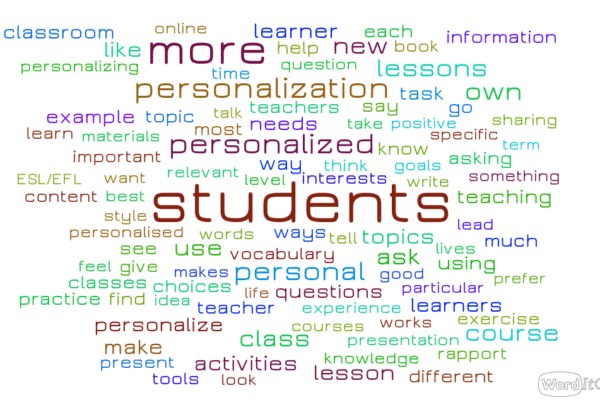This course is interactive. Really?
E-learning courses are commonly called interactive courses. Many of these courses host presentations and articles online, assign weekly tasks to participants, organize webinars and chats, but are they really interactive?
According to the Merriam-Webster dictionary,
I’d like to focus on the second definition “requiriring people to talk with each other or do things together”. This definition might mean an interactive course would require the interaction of participants.
Different authors (MOORE, 1989; HILLMAN, WILLIS & GUNAWARDENA, 1994, GARRISON, ANDERSON & ARCHER, 2000) state the importance of interaction in online and blended learning and the necessity for course designers to reflect about the topic in order to carefully plan these interactions which are vital to learning.
What is interaction in online courses after all? Moore (1989) indentifies three types of interactions: student-content, student-teacher and student-student. Hillman, Willis and Gunawardena (1994) suggest one more type of interaction deserves our attention: student-interface.
Hirumi (2002) adds to the notions of the above mentioned authors by describing e-learning interactions in three levels:
Very simply put, Level I interactions would be the interactions which happen within the mind of a learner. Level II interactions would be the human and non-human interactions which might take place, such as Learner-Learner or Learner-Content. And Level III interactions would be the planning of strategies to stimulate Level II interactions which would lead to Level I interactions.
I’ve seen many online-course designers, including myself, worry about stimulating learner-content, learner-learner and learner-teacher interactions (Level II), however, most of us seem to fail to carefully plan, sequence and analyse events to promote e-learning (Level III interactions).
Hirumi (2002) explains that in face-to-face classrooms many of the interactions which take place are spontaneous. Differently, in the online environment, most of the interactions are asynchronous, text-based and mediated by technology. Therefore, key interactions should be planned and managed as an integral part of e-learning.To design an interactive course then, we shouldn’t forget interactions are the core of learning.
I believe those of us, who have ventured into online or blended teaching, are fully aware this different environment poses challenges we hadn’t imagined. Nevertheless, in view of all the different researches going on about interactions and e-learning, I dare say little by little course designers will be more equipped to plan interactions, consequently making online learning more enjoyful and efficient.
REFERENCES
GARRISON, D. R.; ANDERSON, T.; ARCHER, W. (2000)Critical Thinking in a text-based environment: computer conferencing in higher education. In: Internet and Higher Education, 2 (2), p. 87-105. em<https://www.sciencedirect.com/science/article/pii/S1096751600000166> .
HILLMAN, D.C.A.; WILLIS, D.J.; GUNAWARDENA, C.N. (1994) Learner-interface interaction in distance education: an extension of contemporary models and strategies for practitioners. American Journal of Distance Education 8(2): p. 30-42.
HIRUMI, A. (2002) A Framework for Analysing, Designing and Sequencing Planned Elearning Interactions. In: Quarterly Review of Distance Education. Volume 3 (2), pp 141-160.
MOORE, M. G. (1989) Editorial: Three types of interaction. American Journal of Distance Education, 3(2), p. 1-6. Available at <https://www.gwu.edu/~ed220ri/reading/Moore_Interaction.pdf >.









